Product manufacturers share what’s new — and their five-year forecasts
We asked nine industry suppliers to share information on the termite control products they developed for pest management professionals (PMPs). Read on for their insights and announcements. We also want to know about the termite and other wood-destroying organism (WDO) methods you’re using, and what you hope to add in the near future. Drop us a line at pmpeditor@northcoastmedia.net.
AMVAC
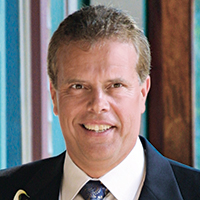
Dr. Chuck Silcox
Dr. Chuck Silcox
Product Development Manager
RECENT INNOVATION: Navigator SC termiticide/insecticide provides PMPs with cost-effective and reliable pre- and post-construction termite control.
For post-construction applications, Navigator SC must be applied after the final grade is installed. To protect the structure from termite infestation and/or to control existing termite infestations, the applicator must trench and rod into the trench, or trench and treat around the foundation walls, pillars and other foundation elements using dilutions of 0.06 percent to 0.125 percent fipronil. The depth of treatment will vary depending on soil type, degree of compaction and location of termite activity. Treatment should be applied from grade to the top of the footing.
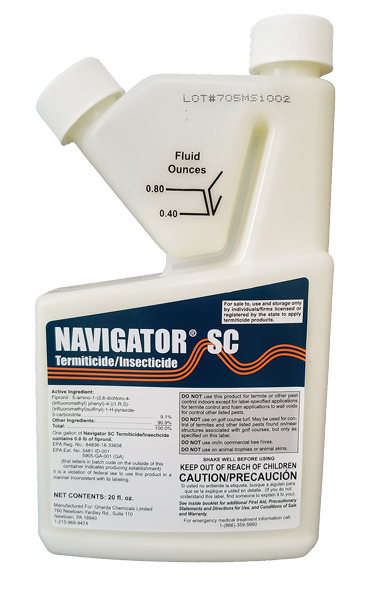
IMAGE: AMVAC
To establish a complete exterior perimeter treatment zone along the foundation wall, drill any exterior concrete structures adjoining the foundation, such as patios, porches and sidewalks and treat by sub-slab injection of Navigator SC finished dilution. Before treatment, locate and identify all heating or air conditioning vents and ducts, water and sewer plumbing lines, electrical lines and conduits, and
avoid contamination.
PREDICTIONS: Because termites cause billions of dollars of structural damage worldwide each year, it is likely that researchers and scientists will continue to seek new ways to control and eliminate these pests. As a result, we predict PMPs are likely to see the introduction of additional niche products intended for termite control in specific structures, and areas within those structures.
BASF PROFESSIONAL & SPECIALTY SOLUTIONS

Dr. Bob Davis, BCE
Dr. Bob Davis, BCE
Technical Services Representative
RECENT INNOVATION: When used according to label, foraging subterranean termites locate and enter the Trelona ATBS Annual Bait Station, feed upon the bait matrix, and share the active ingredient (novaluron) with their nestmates. Novaluron is an insect growth regulator (IGR) that inhibits chitin biosynthesis during the molting process. Worker termites molt. Worker termites with novaluron will molt improperly and thus expire from the Trelona treatment, providing colony elimination and structural protection.
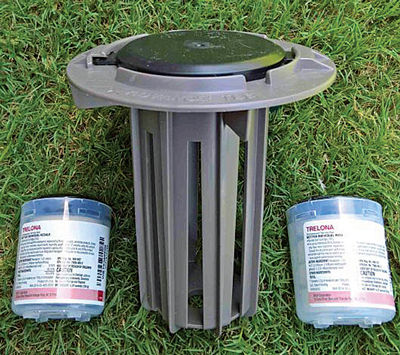
IMAGE: BASF
The Trelona Annual label innovation allows for the option of annual inspections, which can help limit labor costs while providing control. Trelona can be used as a new construction (pre-construction) and/or a post-construction treatment. It can be applied as a curative or a preventive termite treatment, and can be used in combination with BASF’s Termidor line of products.
PREDICTIONS: Indications are that the housing market will remain strong over the next few years. Low mortgage rates and high housing demand, coupled with low supply, will promote new construction. This will increase the need for PMPs to provide WDO inspections for refinancing and initial mortgages — which can lead to WDO treatments.
CONTROL SOLUTIONS INC.
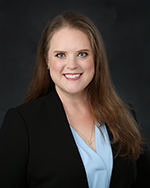
Dr. Janis Reed, BCE
Dr. Janis Reed, BCE
Technical Service Manager, Product Development Team
RECENT INNOVATION: Taurus Dry is a dry flowable formulation, designed to be applied via the Precision Delivery System (PDS), for the control of almost any species of termites — in nearly any type of situation — and in any type of structural wood. The PDS makes applications into carton material/nests, shelter (mud) tubes, voids, galleries, or any other wood from soil line to roofline easy, with a simple pull of a trigger.
The formulation consists of a proprietary, non-repellent material, and the active ingredient fipronil. The end use product is delivered as very small particles, which allows application via the PDS and penetration into voids, galleries, shelter tubes and nests. Wherever air can flow, Taurus Dry can flow.
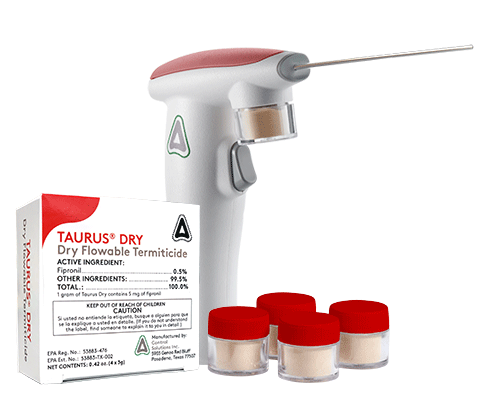
IMAGE: CSI
PREDICTIONS: Our development team is hard at work on a number of termite innovations to add to our already-robust line of termite management tools. We hope to launch some of these products in the coming years.
As far as our termite business forecast goes for PMPs, we foresee it as remaining complex. In general, the most impactful toolbox changes will likely come in the form of new technologies, and in literal tools for PMPs to use in finding, identifying and treating termite infestations.
CORTEVA AGRISCIENCE

Nick Browne
Nick Browne
Sentricon Category Lead
RECENT INNOVATION: Using the power of Recruit AG FlexPack above ground bait stations with Always Active technology, noviflumuron, Recruit HD bait and more, Certified Sentricon Specialists can rely on the Sentricon system as a standalone solution for every termite situation. Above-ground bait stations eliminate active termite colonies, working hand-in-hand to eliminate colonies with in-ground bait stations.
IMAGE: CORTEVA AGRISCIENCE
There are some situations where drilling or coring is impossible, but that doesn’t mean termites aren’t present: Termites can be found in underground structures, boats, trees, boiler rooms, crawlspaces and other inaccessible areas that require advanced tools. Sentricon’s one-two punch — above-ground stations for curative spot treatments, and in-ground bait stations for continuous curative and preventive protection — hits termites wherever they are, above-ground or underground.
While it’s important to solve current infestations, preventing a situation before there’s a problem is the ultimate goal of pest control. Going forward, the future of the pest control industry is clear: We’re moving beyond curative treatments and toward preventive control solutions. Recruit AG FlexPack speeds colony elimination by immediately introducing Recruit HD bait to termites. Together with in-ground stations, technicians can quickly address active infestations while also offering preventive protection to homeowners.
PREDICTIONS: We at Corteva strive to stand by our vision statement, which includes delivering transformative solutions for our partners and the communities they serve. We believe that “innovation” is more than an active ingredient; it is just one part of our commitment at Corteva Agriscience to solve problems and provide solutions that will help revolutionize the pest management industry in 2021 and beyond.
ENSYSTEX

Joe Craft
Joe Craft
Technical Representative
RECENT INNOVATIONS: Focus Termite Attractant is a granular product that helps termites find bait stations. It causes fungi and other microorganisms to release higher amounts of carbon dioxide in the stations. Because termites detect and follow chemical gradients, termites zero in on a station like a bird dog does on quail. Our studies have shown that Focus makes it easier for termites to find stations from as far away as 9 feet.

IMAGE: ENSYSTEX
PREDICTIONS: Spray foam insulation damage claims are increasing. One insurance industry adjuster addressed the problem at a recent industry conference, noting a few recent claims have exceeded $1 million, and one settled at more than $2 million. Some industry consultants believe a class action lawsuit may be announced in the near future.
Investor Warren Buffet is known for promoting the idea that there are three kinds of people in business: “innovators, imitators and idiots.” The most successful pest control companies have innovative strategies for human resources, capital allocation, marketing and handling risk. Now, when you see a competitor treating homes that have spray foam insulation, think twice about imitating. Don’t assume you can handle the risk because some other successful company can. One large damage claim can make it impossible for some companies to get affordable insurance. If you are tempted to treat a home that has spray foam insulation, talk with your insurance carrier first because you may not be covered. Also, talk with your regulatory contact or inspector, and ask what they recommend.
FMC
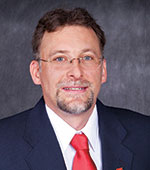
Brian Mount, BCE
Brian Mount, BCE
Technical Services Manager
RECENT INNOVATION: Featuring an active ingredient of bifenthrin, Totality Wood Treatment provides long-term protection from subterranean termites and other wood-destroying insects. It protects wood-based structural components, killing termites that attempt to feed or tunnel over treated wood. Even after five years in the field, Totality-treated wood has been found to have bifenthrin at a depth of up to 0.31 inch, and in a concentration of up to 2,800 parts per million.
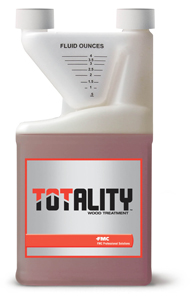
IMAGE: FMC
Totality’s emulsifiable concentrate formulation mixes easily and does not clog spray equipment. On applications, it saves up to 20 minutes of labor and time per job on average, as only a single treatment is required to provide protection. Totality also saves space on vehicles: Each quart makes 10 finished gallons.
FMC offers two additional termite control solutions for PMPs: Dragnet SFR is a multi-purpose insecticide, formulated with permethrin for fast-acting, cost-effective, long-lasting control of termites, fleas, and 75 other pests. Transport Termiticide, meanwhile, controls all three genera of termites: Reticulitermes, Heterotermes and Coptotermes.
PREDICTIONS: FMC has been working on termite control alongside PMPs for decades. Over that time, we have offered a variety of termite control products as termite control methods have continued to evolve. We expect that to continue, as we work with PMPs to develop even more effective, faster and less labor-intensive products and treatment methods.
NISUS CORP.

Dr. Reid Ipser
Dr. Reid Ipser
Director of Technical Services
RECENT INNOVATION: Bora-Care is not only designed for the control and prevention of subterranean termites, it’s also ideal for drywood termites. Drywood termites are social insects that live in colonies in sound, dry wood. They can enter from cracks in roofs, soffits, and other small expansion areas. Once inside the structure, they tend to migrate to the optimal areas for growth. In these areas, colonies grow and bud to other areas that are acceptable. To prevent drywood termite infestations, the whole structure needs to be treated. After the 2-foot band, PMPs can treat the remaining structure at a 5:1 ratio. This will protect the wood from other WDO, too.
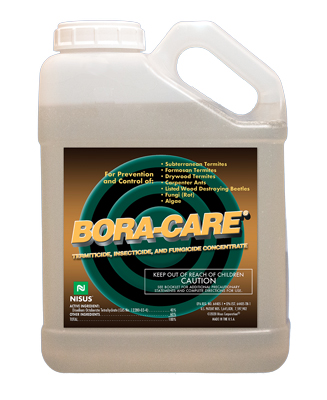
IMAGE: NISUS CORP.
The tricky part is remediation of drywood termites. PMPs should focus on the wood, not necessarily the pest itself. That being said, accessing the colony directly is always the best process — but what happens if the wood is not treated? Will it cause further decay? Will another mated pair potentially reuse the infestation site?
Bora-Care, applied directly onto wood surfaces, handles all of these issues. It is a mineral salt and does not break down over time. It remains in the wood for the life of the wood, providing long-term protection. This in turn will prevent future infestations and decay.
PREDICTIONS: Nisus will continue to provide a detailed emphasis on drywood and subterranean termite prevention and remediation. Our primary focus is to provide a complete education and training program for companies, to ignite and expand their current termite treatment services. We will continue to concentrate on providing a thorough understanding of wood protection and WDO prevention, detection and control.
ROCKWELL LABS

Dr. Cisse Spragins
Dr. Cisse Spragins
Founder and CEO
RECENT INNOVATION: While not covering as much geographical area as subterranean termites in the U.S., drywood termites are a significant economic pest. And much of their active regions are quite populous. While well-known for bed bugs, CimeXa Insecticide Dust, comprised of 100 percent amorphous silica, also is labeled for both prevention and treatment of drywood termites. Amorphous silica has been documented as a highly effective treatment for drywood termites going back to the 1970s.
CimeXa is long-lasting, odorless, non-repellent and low in toxicity. Preventive treatment can be performed on existing structures in a manner that is minimally disruptive to homeowners.
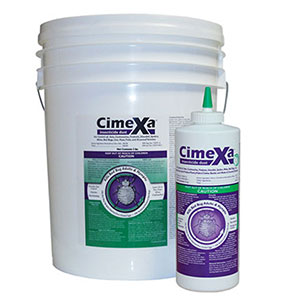
IMAGE: ROCKWELL LABS
Termites are also highly susceptible to well-formulated botanical sprays such as EcoVia EC. While botanicals are not approved for subterranean termite pretreatments, because of the short residual activity, EcoVia EC is labeled to kill termites quickly by contact — in less than 5 minutes — and may be used as a spot treatment in certain accounts.
PREDICTIONS: Predicting anything during a worldwide pandemic is a challenge. However, we are confident regulation will continue to increase, and consumers will increasingly demand effective products that offer minimal risk. And for those reasons, we will see new innovations in both products and targeted application methods.
Personally, I expect biopesticides and naturally derived pesticides to play an increasing role in the future. There are exciting developments in areas such as nanotechnology and genetically engineered fermentation that will likely touch our industry down the road.
SYNGENTA PROFESSIONAL PEST MANAGEMENT
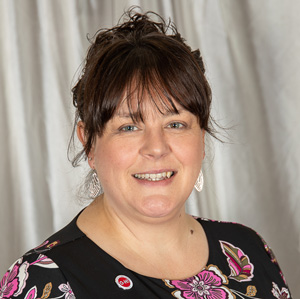
Dr. Nicky Gallagher
Dr. Nicky Gallagher
Technical Services Manager
RECENT INNOVATION: Altriset termiticide is a liquid soil-applied termiticide registered by the U.S. Environmental Protection Agency under its Reduced Risk Program. When used in accordance with the label, Altriset controls termites in less than three months, and provides long-lasting structural protection.
Altriset, which contains the active ingredient chlorantraniliprole, has one of the lowest use rates per finished gallon on the market; it also has a low impact on non-target organisms such as earthworms. Altriset is also labeled for drywood termites, and can be easily mixed into a wet or dry foam to help penetrate termite tunnels. With excellent transfer effects, Altriset can be effective down to one part per million.
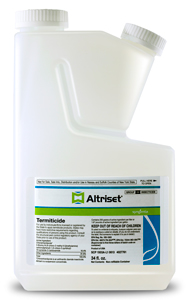
IMAGE: SYNGENTA
In addition, the Syngenta team has a healthy pipeline of active ingredients and potential solutions. Our innovation is customer-focused, and new launches in the termite market will be developed soon to continue to help address the challenges our customers face.
PREDICTIONS: Just like with other pests, climate change has the potential to affect both native and invasive termite species. That, along with increased urbanization and accelerating economic globalization, will impact termite pressure. Predictive climate modeling suggests we will see changes in the distribution of invasive termite species across the globe.
While this might not happen on a large scale within the next five years, we are already seeing the impact of invasive species adapting to local climates: In parts of Florida, hybridization between Formosan termites (Coptotermes formosanus) and Asian subterranean termites (C. gestroi) has the potential to produce a highly destructive “super‐termite.” Dr. Thomas Chouvenc, assistant entomology professor at the University of Florida, is studying this phenomenon.
Leave A Comment